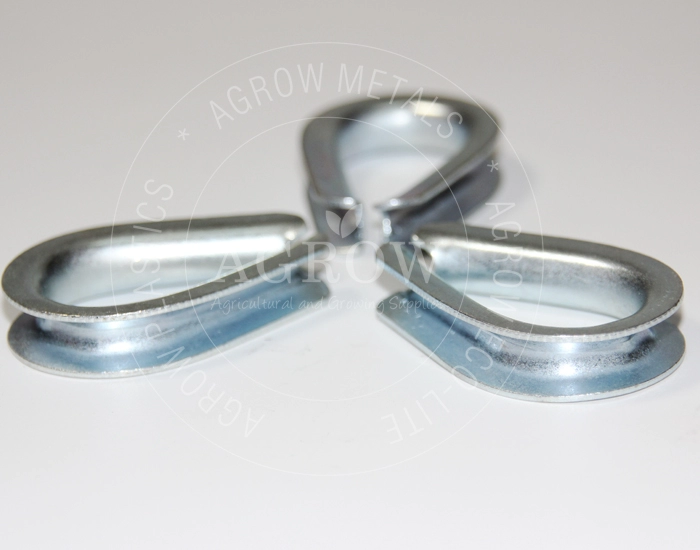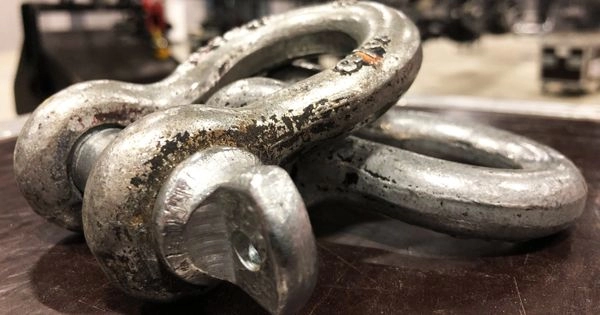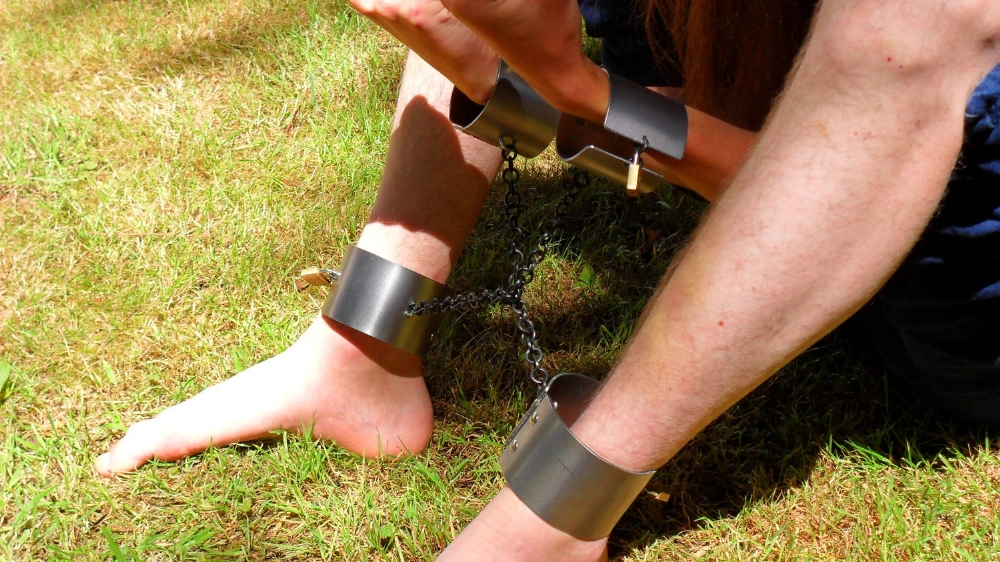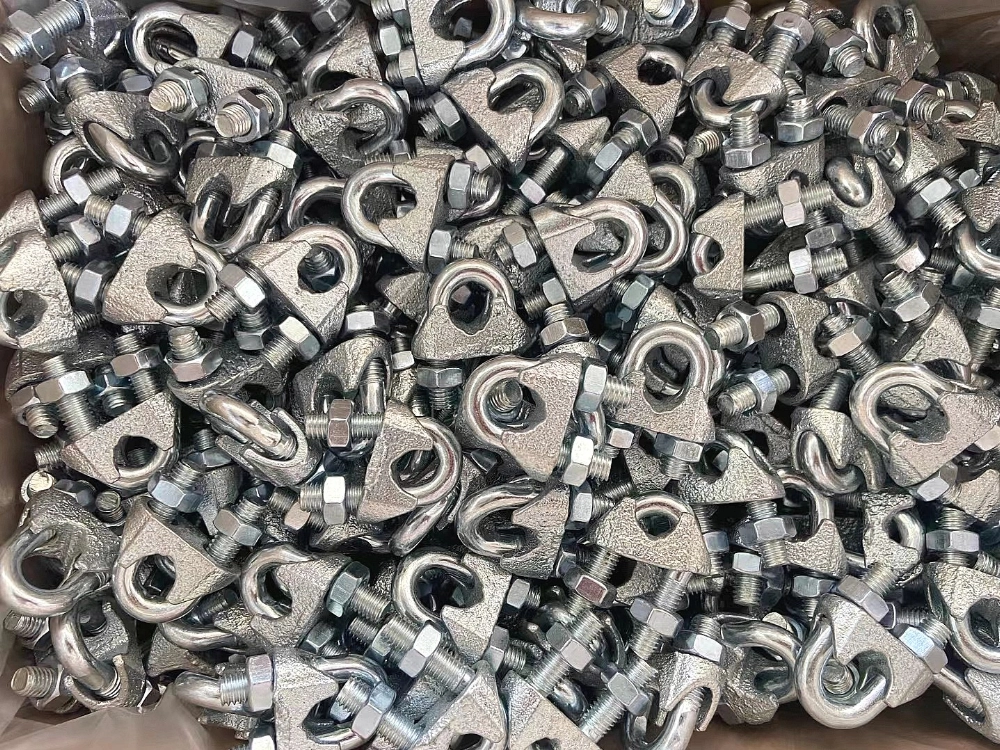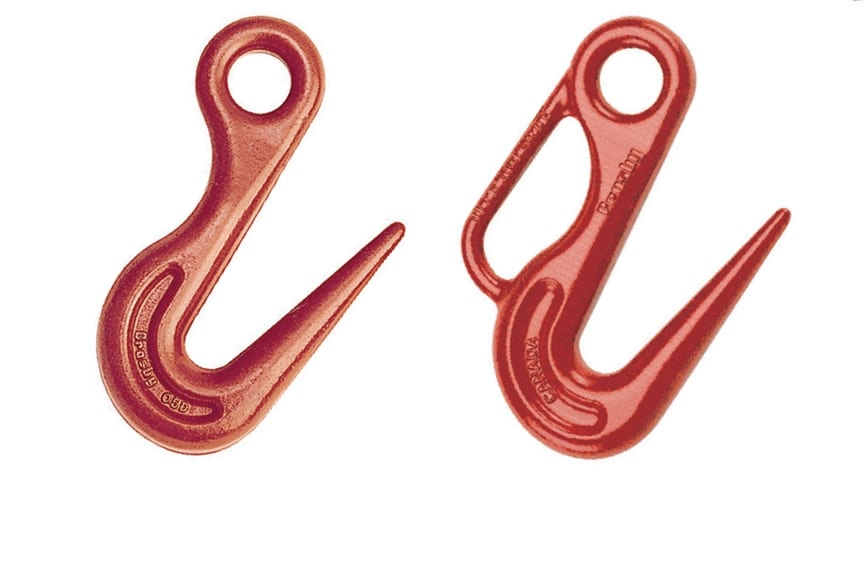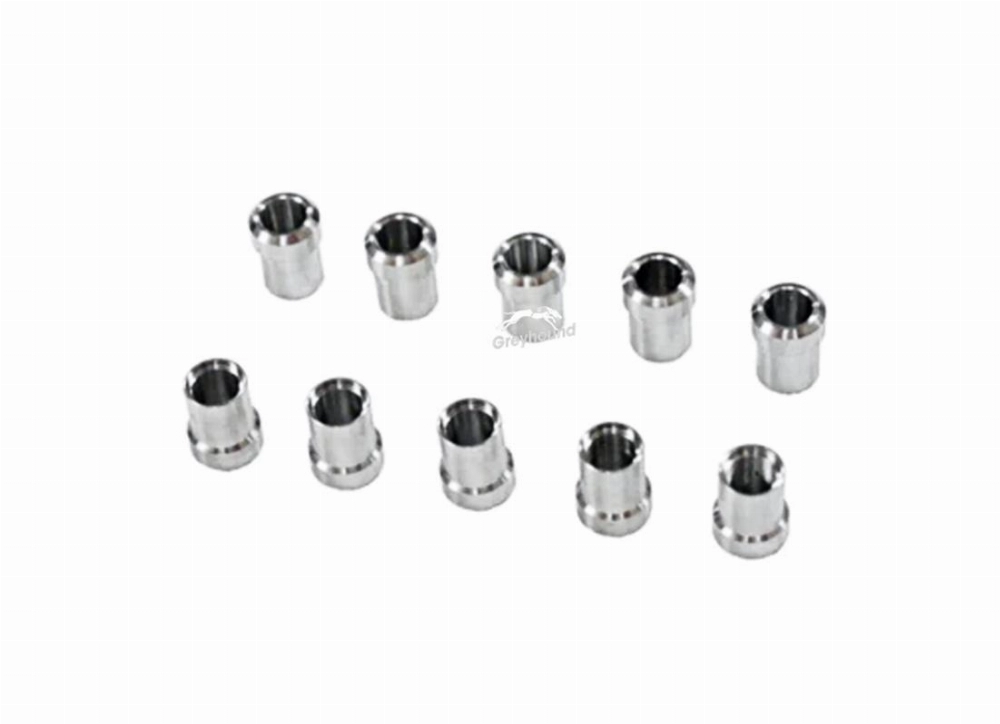Need help? Write to us info@hqlifting.com
- Charging Accessories
- Lifting accessories
- Steel Cable
- Beam cart
- Turnstile for load securing
- Load Ratchet Strap
- Lifting current
- Chain for Load Lifting
- Lifting equipment
- Slings
- Steel Cable Tensioner
- Polyester slingshot
- Load binders
- STEEL HOOK
- Steel Cable Clamp
- Electric winch
- Permanent magnets
- Steel Cable Clamp
- moitão
- Carabiners
- Screw With Eyelet
- Lifting Clamp
- Talha Manual
- Uncategorized
Call our consultants or chat online
+86 151 4514 5178
Guide: How to Use the Ratchet Strap Correctly
This technical guide teaches how to use ratchet straps safely. It covers everything from the history to daily practices. It is made for industry professionals, showing how to follow ABNT standards.
Learn how to use ratchet straps effectively. This helps prevent risks when transporting heavy loads.
Using a ratchet strap correctly requires technical knowledge. In this guide, you will learn step by step. This ensures that you follow safety standards, such as ABNT NBR 14.250. ✅
Certified techniques and verification checklists help choose the right strap. This prevents damage and accidents, whether for light or heavy loads.
What is the ratchet belt and what is it used for
The ratchet strap is a device that helps hold loads during transport. ✅ It works to apply uniform pressure, following standards such as ABNT NBR 16227. It is widely used for how to use a ratchet strap to tie down cargo in vehicles, such as trucks and motorcycles.
History and evolution of tie-down straps
Tie-down straps started with simple materials, such as fiber ropes. Until the 1990s, they were made of chains and steel cables. Over time, they improved with engineering, bringing versions with adjustable ratchets.
- Resistant to loads up to 2,500 kg
- Synthetic materials (certified nylon and polyester)
- Automatic locking mechanisms
Differences between ratchet strap and other fastening systems
Comparing with other options:
- Ratchet straps vs. ropes: ✔️ Controlled tension vs. wear from friction
- Turnstiles vs. chains: ✔️ Adaptability to irregular shapes vs. risk of cargo damage
- Turnstile systems vs. steel cables: ✔️ Ease of how to use ratchet strap for load securing vs. excessive weight
Why the ratchet strap has become essential in cargo transportation
Its use is essential for three technical reasons:
- ISO 10557 Certification for loads up to 10 tons
- Reduction of 40% in accidents due to cargo handling (ABNT data 2023)
- Direct application in how to use ratchet strap for cargo in vehicles of various sizes
Essential for logistics, the ratchet strap meets legal requirements and international safety standards.
Types of ratchet straps available on the market
The market has several options for different needs. See the certified models:
- ✅ High tenacity polyester tapes: They are 50mm wide straps, support 1,200kg, and have a breaking strength ≥2,400kg. They are perfect for heavy road transport.
- ✅ Reinforced belts 3 tons: They are ideal for critical situations. They measure 75mm in width, support 3,000kg, and do not stretch more than 8%. They are essential for industrial loads.
- ✅ Mini tapes for light applications: They are small (30mm) and support 800kg. Perfect for packaging or small loads.
- ✅ Special belts for motorcycles: They are designed for motorcycles. They measure 45mm and have an anti-slip system. They are great for securing motorcycles and two-wheeled vehicles.
- ✅ Models for aerial work platforms: They are abrasion resistant according to ISO 105-X12 and comply with EN 12195-3. They are ideal for industrial equipment.

✅ Mandatory certifications: All models require documents that prove compliance with standards such as ABNT NBR 16.220-1 and ABNT. Always check the labels before use.
To choose well, look at the width of the strap, the elongation under load, and the nominal working load. Choosing the right one helps follow safety rules.
Understanding the load capacity and strength of the straps
To ensure safety in tie-down operations, it is essential to understand the technical specifications of ratchet straps. The right choice depends on the weight, shape, and transportation conditions of the load. ✅
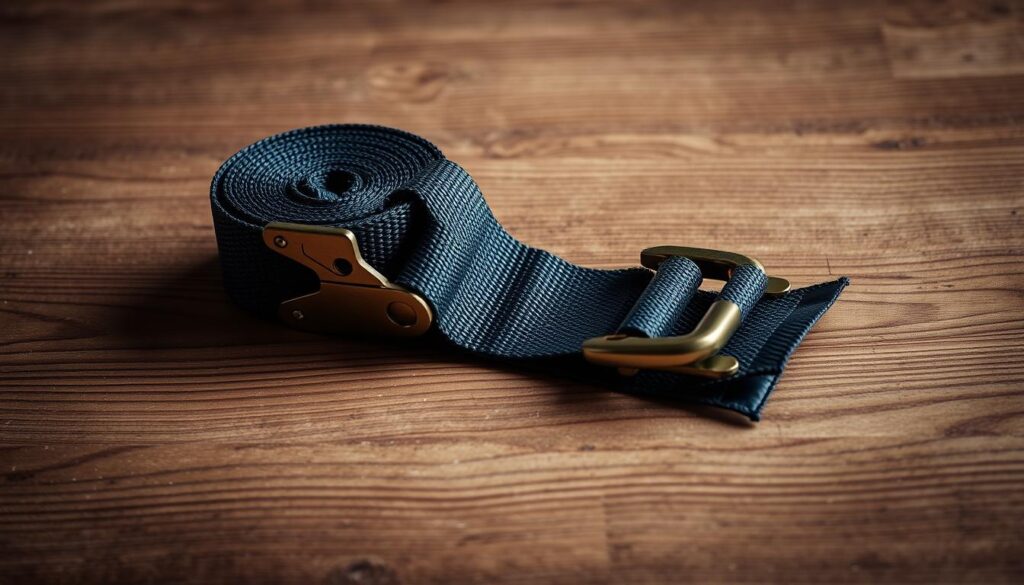
Interpreting the technical specifications
- ✅ Workload (LC): Define the maximum recommended load for continuous use (e.g., 500 kg for straps for small loads).
- ✅ Breaking Strength (BS): Indicates the force required to break the strap (e.g., 3,000 kg for high-strength models).
- ✅ Safety Factor: Multiplier (2:1 or 3:1) applied to ensure a safety margin against dynamic overloads.
How to choose the ideal ratchet strap for each type of load
To choose the right belt, follow these steps:
- Calculate the total weight of the load and add 20% for fluctuations during transport.
- Check the installation angle: angles close to 90° maximize the strap's efficiency.
- Check ISO/ABNT certifications to ensure compliance with industry standards.
Ratchet straps for small loads vs. high-strength straps
| Parameter | Small Ribbons | High Strength Tapes |
|---|---|---|
| Maximum Capacity | Up to 500 kg | 3,000 kg+ |
| Main Material | Reinforced nylon | Polyester with anti-UV coating |
| Typical Application | Boxes, light components, how to use a ratchet strap to tie a box | Metal structures, heavy equipment |
| Turnstile | Compact mechanism with quick lock | Robust design with automatic locking |
For loads up to 500 kg, attention to safety factors is crucial. In operations with boxes, prefer models with adjustable ratchets and certified for dynamic loads. The table above facilitates comparison between options, avoiding undersizing or excess material.
Anatomy of a ratchet strap: get to know each component

Understanding the structure of the ratchet strap is essential. This ensures its correct use and maintenance. Each part is made to follow standards and increase safety in transportation.
✅ 1. Textile tape: Made of durable polyester, protected against sun and chemicals. Its strong edges prevent it from fraying early. Check the load capacity before use.
✅ 2. Ratchet mechanism: It has stainless steel gears and an automatic lock. The release lever makes it easy to release. This complies with ISO/EN 12195-2 standards.
✅ 3. Terminal hooks: They are of types D, O, and rectangular, with specific load. Install them between 90°±5° to avoid damage.
✅ 4. Abrasion protections: They are made of recyclable polypropylene and TPU. Replace them if the wear is greater than 30%.
✅ 5. Identification labels: Show CE certifications, serial number, and manufacturing date. Perform a visual inspection weekly.
Identifying each part reduces the risk of failure. Knowing the anatomy helps to use the belt correctly. The combination of certified materials and ergonomic design ensures good performance.
Check the connections and important components regularly. This keeps the strap effective during transport. The anatomy helps to choose the right ratchet strap for each situation, whether for heavy loads or precise operations.
How to use a ratchet strap: step-by-step guide
To ensure safety and efficiency in load securing, follow this technical protocol. The correct application of the ratchet strap involves preparation, positioning, and operation aligned with safety standards. ✅
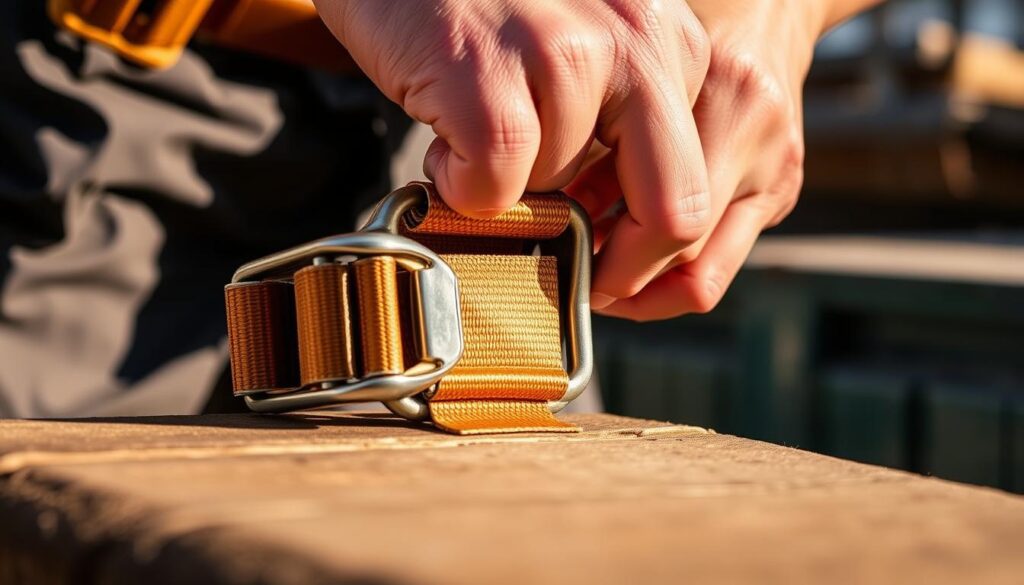
Preparation before tying
- Visual inspection: Check for exposed wires, ratchet deformations, or wear exceeding 10% of the coating.
- Load calculation: Multiply the total weight by the friction force (e.g., load of 500 kg + 20% overload = 600 kg minimum requirement).
- Selection of anchor points: Use certified metal fasteners (ISO 10545) with a capacity ≥ 2x the total load.
Correct positioning of the belt
Position the strap at a 45° angle to the load axis, maintaining 15-25 cm between attachment points. For irregular loads, add auxiliary locks on fragile edges.
Turnstile operation for proper tensioning
| Parameter | Technical Specification |
|---|---|
| Maximum torque | Up to 25 Nm for loads up to 1,000 kg |
| Number of laps | 3-4 full turns on the ratchet |
| Final verification | Measure lateral deformation ≤ 2 mm after adjustment |
How to use the ratchet strap halfway (choker method)
For cylindrical loads, position the strap in a "U" shape with the ring centering the load. Adjust the ratchet up to 80% of the maximum capacity, avoiding lateral twisting. This method requires a reduction of 50% in the nominal capacity according to ABNT NBR 13,500 standard.
How to safely release the strap
- Gradually reduce the tension by turning the ratchet 1/4 turn at a time;
- Position yourself sideways to minimize the risk of sudden ejection;
- Check the load stability before fully removing the strap.
Specific applications of the ratchet strap
To comply with technical standards, the ratchet strap is used in different ways. This depends on the type of vehicle and the load it carries. Here, we will show how to use the ratchet strap in different situations, following the rules of the logistics industry.
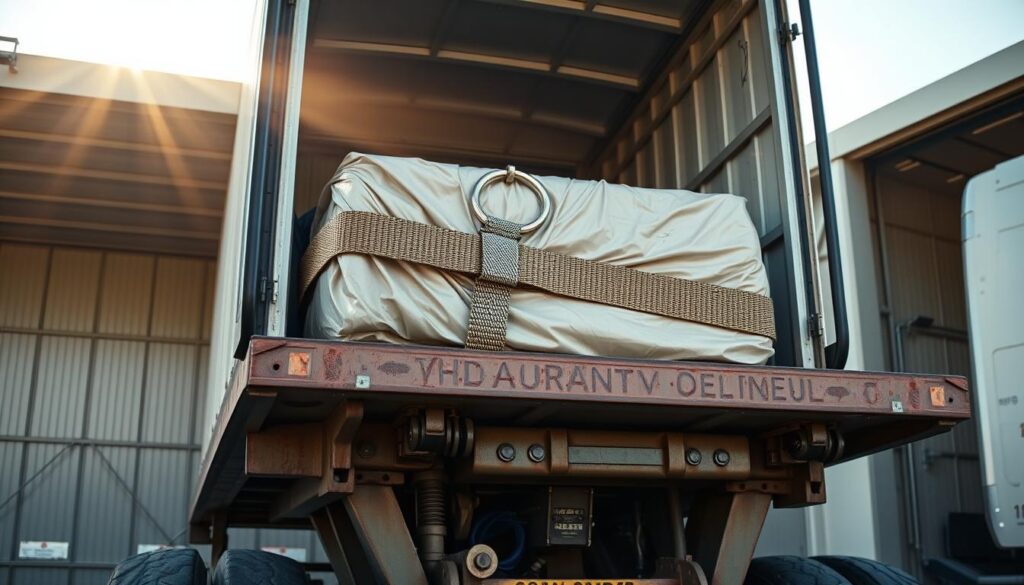
Flatbed truck
✅ How to use the ratchet strap on the flatbed truck: For stability, use "X" or crossed fastenings. The maximum distance between anchors must be 1.2m. The strap tension must be at least 50% of its total capacity.
For loads that are not regular, add side locks with double ratchets. The ABNT NBR 14035 standard states that the fastenings must be at an angle ≤ 45°.
Pickup truck and saveiro
⚠️ How to use Saveiro belt ratchet: Choose certified anchor points, such as OEM fixing rings. If the load exceeds the bed, use an additional containment net. The final tension must be 70% of the strap's nominal capacity.
For motorcycles, avoid pressing on electrical components. See CONTRAN Resolution 562/2014 for more details.
Moto
🔧 How to use a motorcycle ratchet strap: Attach the strap to the frame and the handlebar, using plastic dampers. The tension should be between 30°-45° to avoid deforming the dampers. It is mandatory to use anti-scratch dampers on sensitive parts.
For example, fasten the strap at a right angle between the wheels and the ratchet.
Special loads
⚠️ How to use a ratchet strap to secure cargo in a pickup truck: For cylindrical loads, use metal rod adapters. Protect sensitive surfaces, such as glass, with anti-scratch foam. For irregular loads, divide into sections and use diagonal fastenings.
Each sector must have at least 2 attachment points.
Safety first: essential precautions in use
To ensure the safety of the cargo, follow the technical protocols carefully. The how to use ratchet strap must follow the ABNT NBR 15883-1, 15883-2, and 16785 standards. Check the equipment certification and compatibility with the load before use.
- ✅ Utilize how to use ratchet tie-down straps with Personal Protective Equipment (PPE): cut-resistant gloves, safety shoes, and helmet in risk areas.
- ✅ Respect the nominal capacity of the strap with a safety factor: how to use ratchet strap for loads must follow the nominal load ratio ≤ 80% of the maximum capacity.
| Parameter | Requisito Técnico |
|---|---|
| Maximum allowed load | Up to 80% of certified capacity |
| Inspection interval during transportation | Every 100 km or 2 hours |
| Voltage check | Minimum of 2.5% elongation after installation |
Before starting transportation, perform resistance tests. Simulate jolts and sudden braking. During transportation, conduct periodic inspections to keep the equipment in proper condition.
In operations with multiple straps, balance the tensions. First, adjust the side fastenings, then the diagonals. Replace immediately if there is visible damage. Safety is essential for the integrity of the load and the safety of everyone.
Common errors when using ratchet straps and how to avoid them
Errors in the application of ratchet straps can compromise safety. It is important to know the main errors and how to correct them. This way, you follow the safety standards.
Inadequate tensioning
- Subtensioning: The load slips. ✅ To prevent this, keep the tension between 5-10% above the initial measurement.
- Overtensioning: The tape may deform. ✅ Check the tension with a tension measuring device.
Incorrect positioning
Common errors include:
- Attach the strap in uncertified locations, such as platform edges.
- Use 60° angles between the strap and the structure.
- Concentrate the stress at a single point, such as the edges of metal loads.
Use of damaged tapes
| Damage indicator | Critical limit |
|---|---|
| Cross sections | Exceed 5% of the strap width |
| Superficial abrasion | Loss >10% of nominal thickness |
| Mechanical deformation | Misalignment of the ratchet greater than 15° |
Negligence with maximum capacity
To calculate the effective load, consider:
- The static weight plus 30% of dynamic factor (acceleration/braking).
- The resonance effect in irregular paths, which can be greater than 1.2x the nominal load.
For how to use the ratchet strapping machine on the post, adjust the angle between 45°-60°. Distribute the pressure evenly around the entire contour.
For how to use small ratchet straps, fix it at certified points. Avoid layer overlap. The operation of the machine tape with ratchet requires weekly verification of the tension mechanism alignment.
Conservation and maintenance of ratchet straps
For the ratchet strap to work well and be safe, it is crucial to take good care of it. Preventive maintenance helps avoid problems and keeps the certification. Here's how to do it:
- Dry waste: Soft brush + low-pressure compressed air.
- Chemical contaminations: Wash with neutral detergents (5-10% concentration) in water ≤40°C. Natural drying in a ventilated area.
✅ Proper storage:
- Relative humidity
- UV protection and a minimum distance of 50cm from heat sources.
- Suspended or shelved storage to avoid permanent creases.
⚠️ Mandatory replacement when:
- Superficial wear >10-15% of the original thickness.
- Cross sections >5% or longitudinal >10% of the width.
- Deformation in the ratchet mechanism or corrosion in metal components.
- Age over 2-5 years depending on intensity of use.
Following these guidelines keeps the belt in good condition. This is important, even in high-pressure situations, such as in trucks. Perform regular inspections and record everything in spreadsheets for safety audits.
Conclusion
This guide showed how to use the ratchet strap effectively. A how to use ratchet strap for tying requires technical attention. This ranges from choosing the equipment to performing maintenance.
Positioning and tensioning the strap correctly is crucial. This affects the safety of the load and complies with standards such as ABNT NBR 11200.
A how to use small ratchet strap follow the same rules. It is important to use certified straps for heavy loads. For special loads, it is essential to know the manufacturer's specifications.
✅ Calculating the voltage correctly and checking if the components are intact are essential. Ignoring details such as the tilt angle or pressure can compromise the fastening. Following ABNT standards can reduce loose load incidents in 70%.
Professionals must use certified straps with the INMETRO seal. It is important to follow the installation instructions step by step. Performing regular maintenance, such as chain inspection and strength tests, increases durability and legal compliance.
Failing to comply with the tying rules may result in fines and operational losses. Following this guide ensures safety and technical compliance. Brands such as Transload Solutions e SecureTie offer products that meet technical standards.
Share:

June Han /founder and designer
The co-founder of Hqlifting, sales director, amateur writer about fitness business

